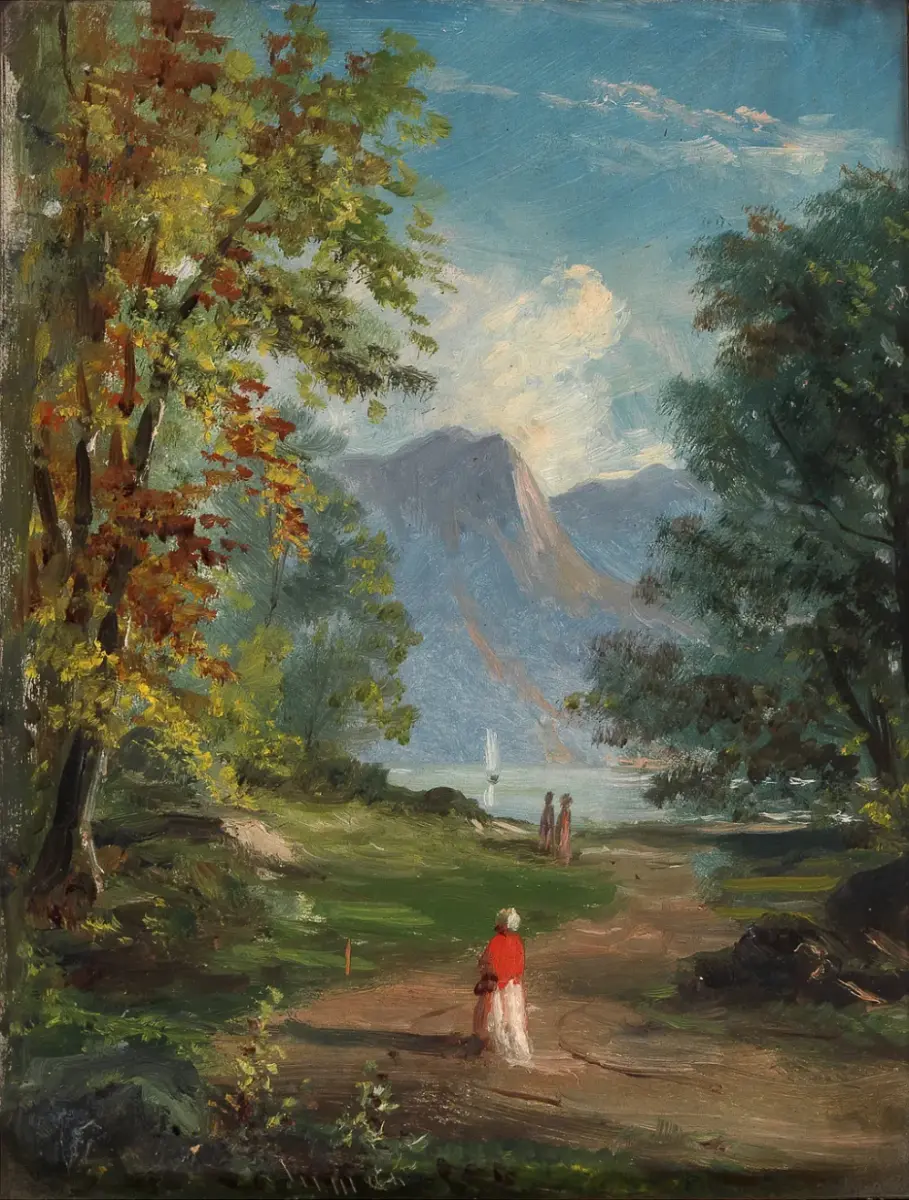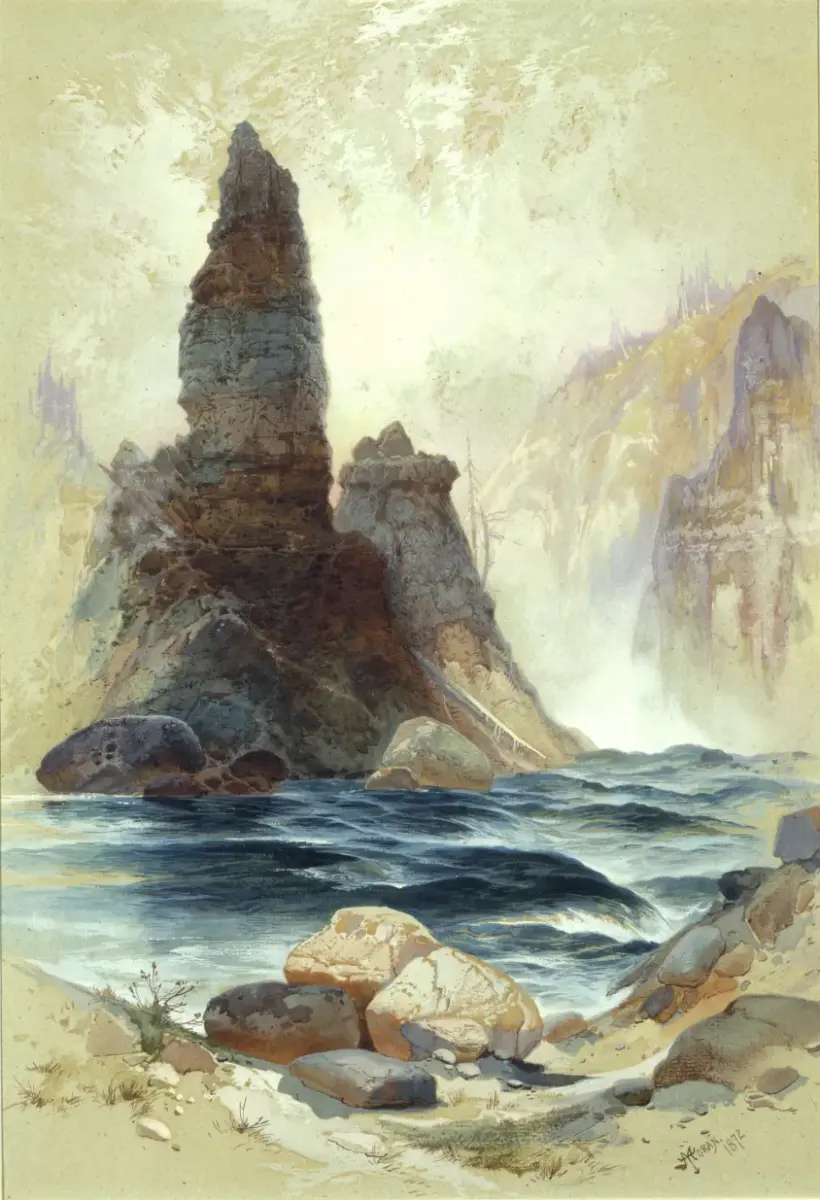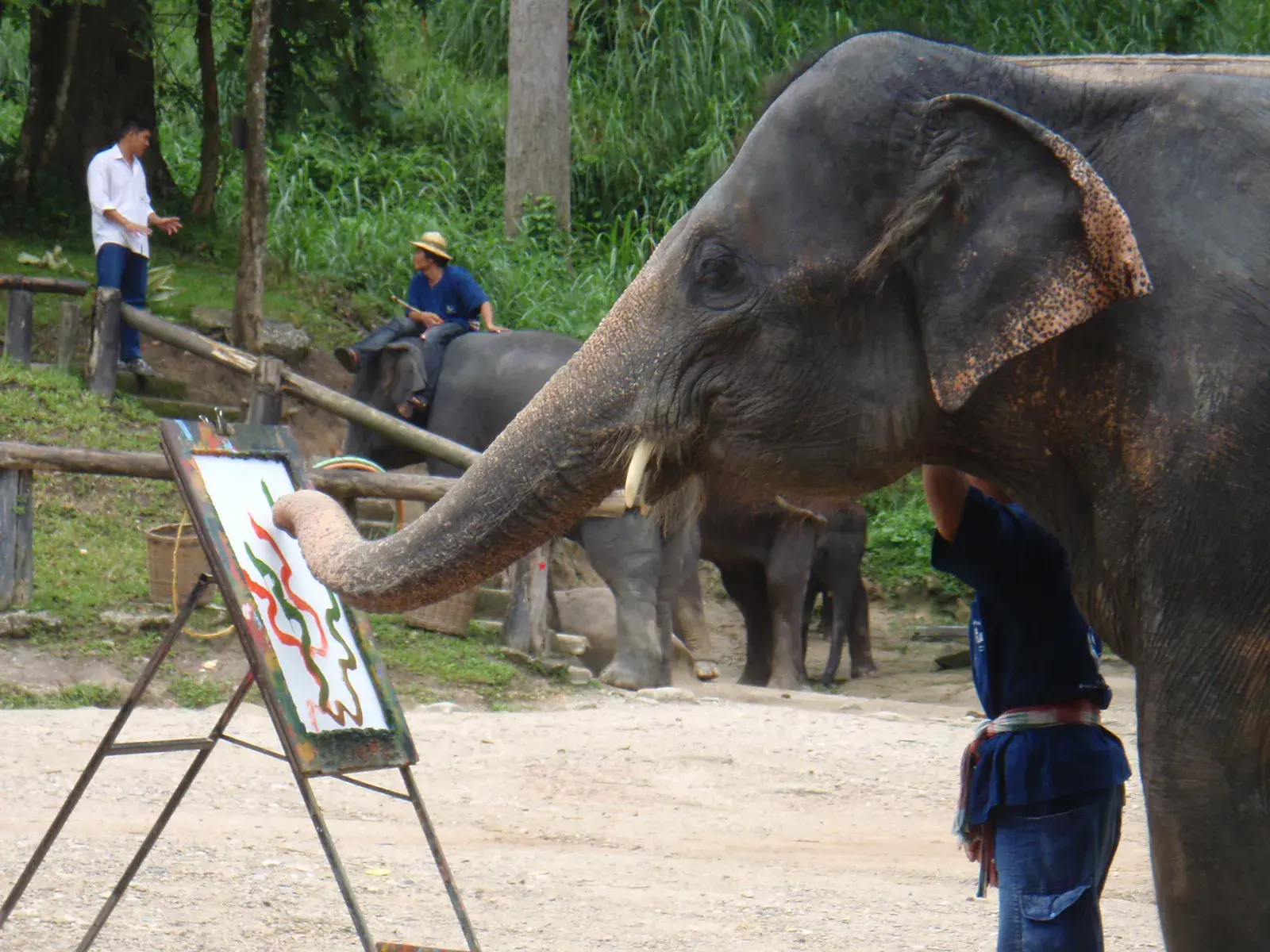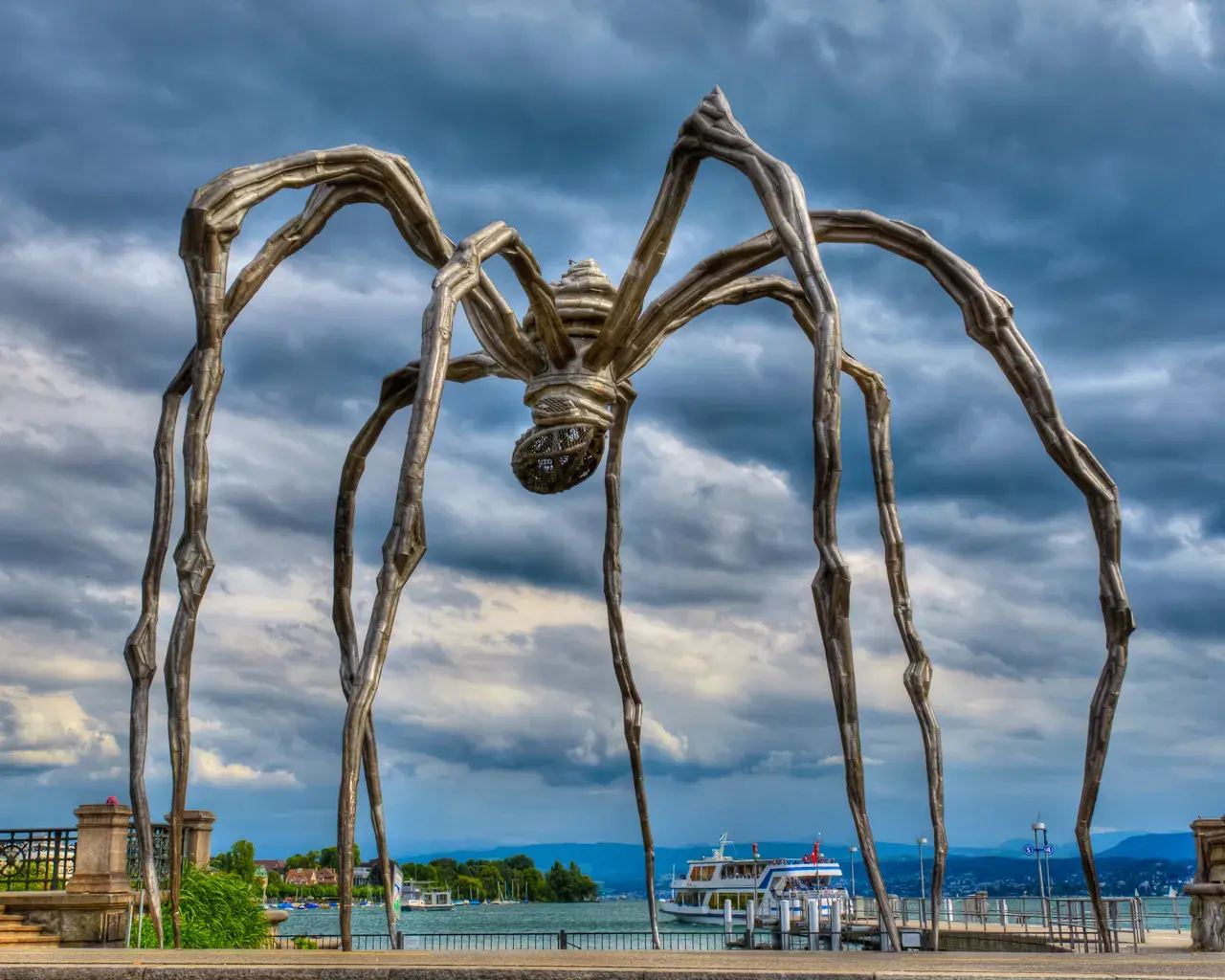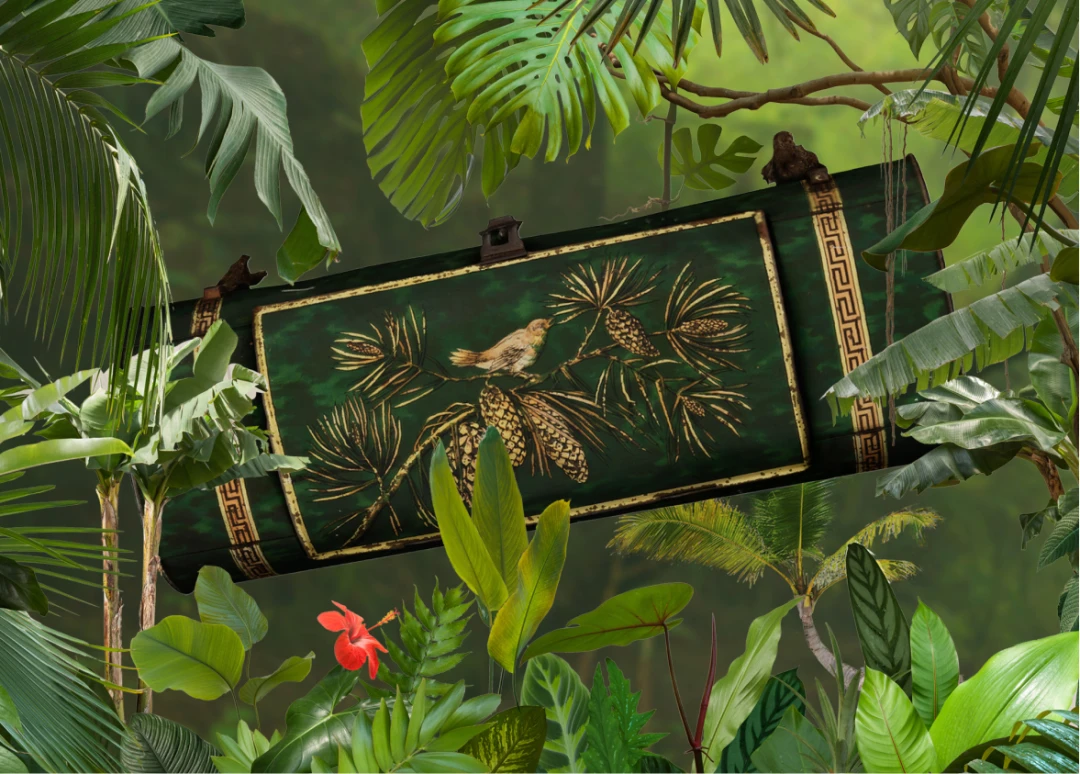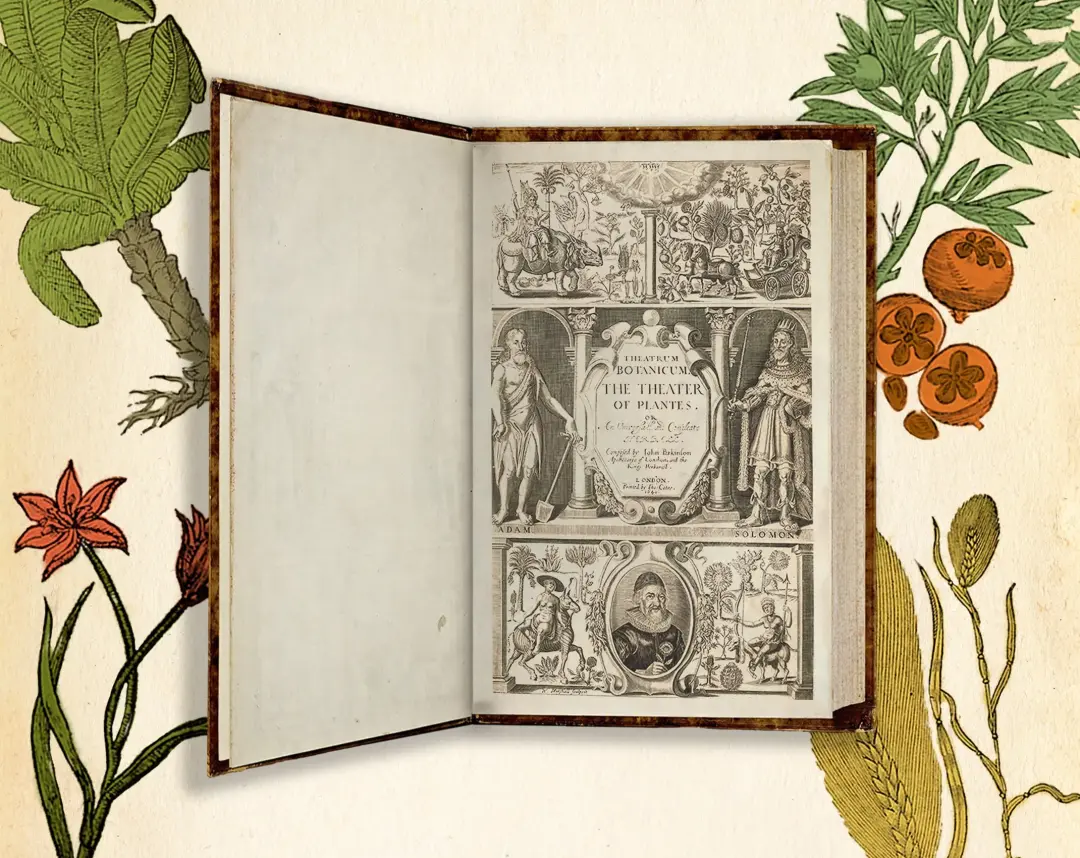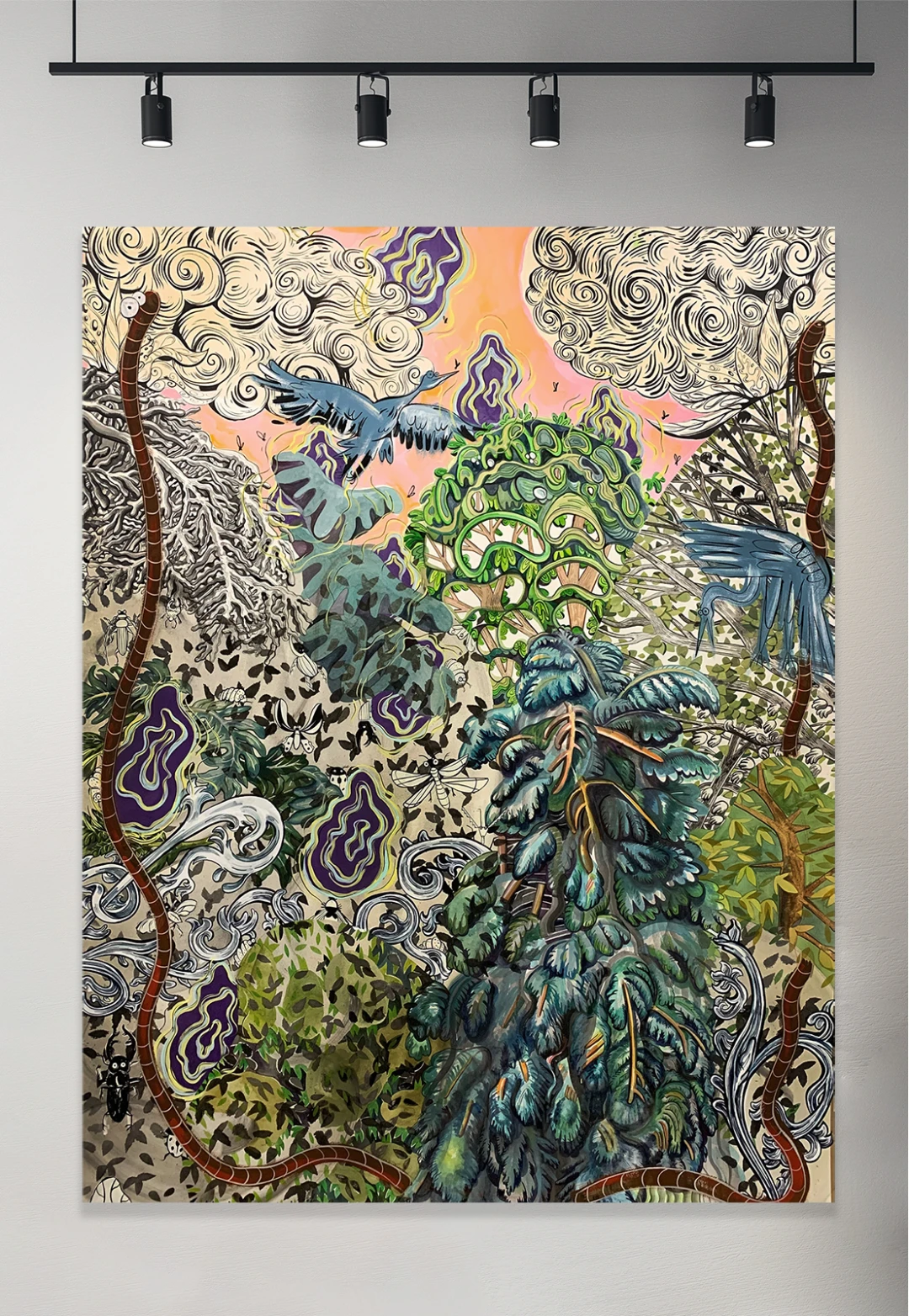What is slow looking?
Slow looking at art means taking your time to really look at and appreciate a painting. It's like when you look at a flower up close and notice every detail – colors, shape, and smell. When we slow look at paintings of nature, we can imagine ourselves in the scene and feel as if we were really there. This helps us love and enjoy nature more.
We can also make our own art by collecting things like leaves, sticks, and rocks and using them to make a picture. It's a fun way to be creative and feel connected to nature. Look at the pictures below to get some ideas!
The art of slow-looking
Nature is not only all that is visible... it also includes the inner pictures of the soul.
Edward Munch, Norwegian painter
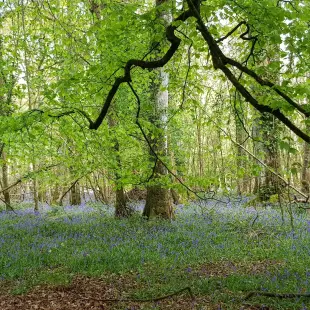
How trees talk to each other!
Did you know that some trees talk to each other in the forest? They do it using underground networks of mushrooms and fungi. These networks allow the trees to share nutrients and even warn each other of danger, for example when pine beetles attack them. It's as if the trees have their own secret language!
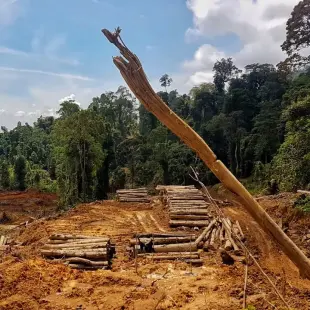
A source of oxygen
Producing large amounts of palm oil and other foods on farms is causing deforestation, a big problem in many parts of the world. Many trees and plants are being cut down to make room for farms, and it's hurting our planet, because fewer trees produce less oxygen.
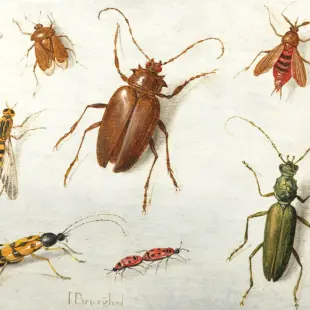
Forests host 80% of life
Forests are special places on Earth where a wide variety of plants and animals live. In fact, more than 80% of the many different types of plants and animals on land can be found in forests! Did you know that more than half of these creatures are insects, like beetles?
What is a légumiste?
Légume means vegetable in French. In the 1700s and 1800s, those who ate a plant-based diet were known as légumistes. Today we call them “vegans” or “vegetarians.” Famous légumistes include Mary Shelley, Voltaire, and Élisée Reclus. Légumistes is also the title of a series of artworks about plants and ecosystems by the French artist duo Lamarche-Ovize.
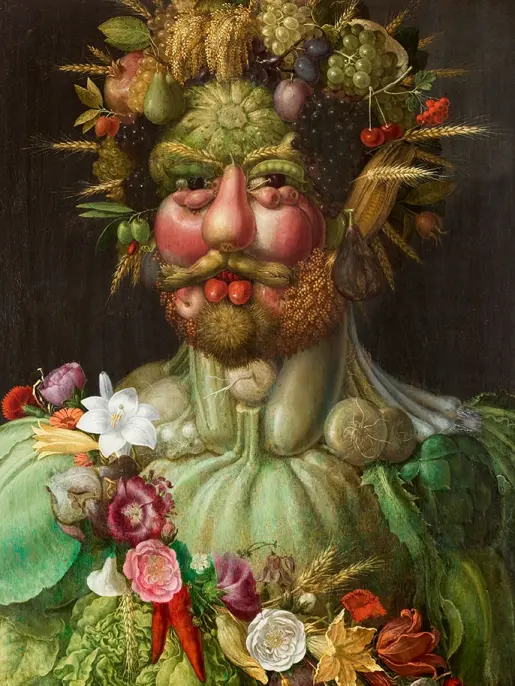
Florentine and Alexandre Lamarche-Oviz
Florentine & Alexandre Lamarche-Ovize are French artists. They create art inspired by nature and use various materials, like drawings and ceramics, to make their pieces. They enjoy trying different art styles and techniques, and are influenced by a movement called Arts and Crafts, which began in the late 1800s. This movement still has an impact on how people make art about nature today.
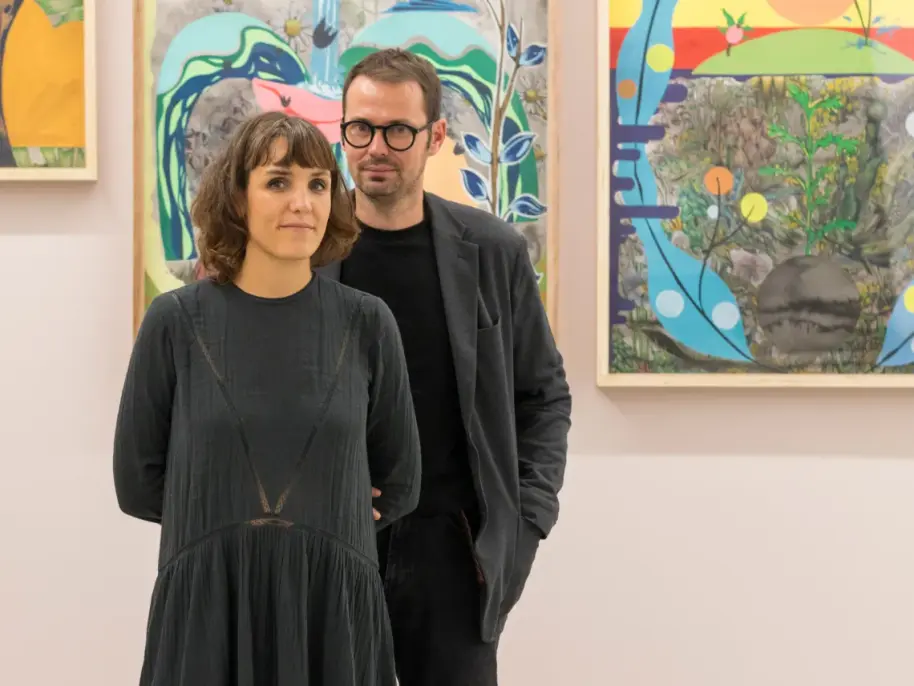
Want to know more?
Bibliography
LANGSAME KUNSTBEOBACHTUNG
Beene, S., & Statton Thompson, D. (2022). Focusing on Slow Looking: An Exploration of Techniques to Develop Critical Observation Habits. Art Documentation, 41(1), 1–18. https://doi.org/10.1086/719405
Berger, J., (1972). Ways of Seeing. London: BBC and Penguin Books.
Berger, J. (2016). Landscapes: John Berger on Art. London: Verso.
Cotter, K. N., Harrouche, M., Rodriguez-Boerwinkle, R. M., Boerwinkle, M., Silvia, P. J., & Pawelski, J. O. (2023). Virtual Art Visits: Examining the Effects of Slow Looking on Well-Being in an Online Environment. Psychology of Aesthetics, Creativity, and the Arts. https://doi.org/10.1037/aca0000548
Durland,S., & Berman, H. (2015). Slow Looking: The Art and Practice of Learning Through Observation. New York: Routledge.
Iovino, S., Cesaretti, E., & Past, E. (2018). Italy and the environmental humanities : landscapes, natures, ecologies. Charlottesville: University of Virginia Press.
Johns, E. (2002). Winslow Homer : the nature of observation. Berkeley ;: University of California Press.
Lin, V. C.-W. (2019). Slow Looking: The Art and Practice of Learning Through Observation. Journal of Museum Education: Expanding Our Community of Practice: Professional Development in Museums, 44(2), 218–222. https://doi.org/10.1080/10598650.2019.1576012 Schor, G. (2016). Slow art, fast world: Vision and transformation in process. Interdisciplinary Humanities, 33(2), 143-169.
Tate Gallery: https://www.tate.org.uk/art/guide-slow-looking
Tishman, S. (2017). Slow Looking: The Art and Practice of Learning Through Observation (1st ed., Vol. 1). Milton: Routledge. https://doi.org/10.4324/9781315283814
Velthuis,O. (2015). Slow art: Taking time to look at art. The Art Bulletin, 07(4), 399-420.
FLORENTINE UND ALEXANDRE LAMARCHE-OVIZE
Lamarche-Ovize, A. & F (2017). Inventaire (catalogue of artworks). Les presses du réel.
DIE ARTS & CRAFTS MOVEMENT
Breuer, G., & Morris, W. (1994). Arts and Crafts : von Morris bis Mackintosh - Reformbewegung zwischen Kunstgewerbe und Sozialutopie ; [Impulsgeber für Jugendstil, Werkbund und Bauhaus] ; Institut Mathildenhöhe, Darmstadt, 11.12.1994 - 17.4.1995]. Darmstadt: Inst. Mathildenhöhe.
Kaplan, W., & Boris, E. (1987). “The art that is life” : the Arts & Crafts movement in America, 1875-1920. Boston: Little Brown.
Tankard, J. B. (2004). Gardens of the Arts and Crafts movement : reality and imagination. New York: H.N. Abrams.
Triggs, O. L. (2012). Arts & crafts movement. New York: Parkstone International.
Wilhide, E. (2005). William Morris and the Arts and Crafts Movement. Thames & Hudson.
NATURBEOBACHTUNG
Carson, R. (1956). The Sense of Wonder. Harper & Row.
Grandin, T., & Johnson, C. (2020). The Outdoor Scientist: The Wonder of Observing the Natural World. Weldon Owen. Kimmerer, R. W. (2013). Braiding Sweetgrass: Indigenous Wisdom, Scientific Knowledge, and the Teaching of Plants. Milkweed Editions.
Lindemann-Matthies, P. (2005). “Loveable” mammals and “lifeless” plants: how children’s interest in common local organisms can be enhanced through observation of nature. International Journal of Science Education, 27(6), 655–677. https://doi.org/10.1080/09500690500038116
Rathmann, J. (2021). A Better Person Thanks to Nature Observation? In Therapeutic Landscapes. Germany: Springer Vieweg. in Springer Fachmedien Wiesbaden GmbH. https://doi.org/10.1007/978-3-658-33848-0_7
Rogers, R., Wallner, C., Goodwin, B., Heitland, W., Weisser, W. W., & Brosius, H.-B. (2017). When do people take action? The importance of people’s observation that nature is changing for pro-environmental behavior within the field of impersonal, environmental risk. Journal of Integrative Environmental Sciences, 14(1), 1–18. https://doi.org/10.1080/1943815X.2016.1268165
Runnel, V., Peterson, M., & Zirk, A. (2017). “My naturesound” - nature observations with sound recordings. Biodiversity Data Journal, 5(5), e20200–e20200. https://doi.org/10.3897/BDJ.5.e20200
Wohlleben, P. (2016). The Hidden Life of Trees: What They Feel, How They Communicate – Discoveries from a Secret World. Greystone Books.
Wohlleben, P., & Billinghurst, J. (2021). The heartbeat of trees : embracing our ancient bond with forests and nature. Vancouver ;: Greystone Books. WALDÖKOSYSTEME, KÄFER UND INSEKTEN
Blavascunas, E. (2020). Foresters, borders, and bark beetles : the future of Europe’s last primeval forest. Bloomington: Indiana University Press.
Ellison, D., Morris, C.E., Locatell, B., Sheil, D., Cohen, J., Murdiyarso, D., ..& Slayback, D. (2017). Trees, forests and water: Cool insights for a hot world, Global Environmental Change, 43, 51-61
Engel, M. S., & Baione, T. (2018). Natural histories innumerable insects: the story of the most diverse and myriad animals on earth. New York: Sterling.
Jenkins, S. (2012). The Beetle Book. Houghton Mifflin.
Jones, R. (2018). Beetles (First published 2018., Vol. 136). London: William Collins, an imprint of HarperCollins Publishers.
Marshall, S. A. (2018). Beetles : the natural history and diversity of coleoptera. New-York: Firefly Books.
Murawski, D., & Honovich, N. (2016). The Ultimate Bugopedia: The Most Complete Bug Reference Ever. National Geographic Kids.
Rackham, O. (2015). Woodlands. London: William Collins.
Resh, V. H., & Carde, R. T. (2009). Encyclopedia of Insects. San Diego: Elsevier Science. https://doi.org/10.1016/B978-0-12-374144-8.X0001-X Weaver, A. H., & Lawrence, G. (2007). The voyage of the beetle: a journey around the world with Charles Darwin and the search for the solution to the mystery of mysteries, as narrated by Rosie, an articulate beetle. Albuquerque: University of New Mexico Press.
Copyright and licenses
Images and videos in the game
Alpine longhorn beetle: Alpine longhorn beetle flying in summertime nature by WildMedia, Adobe Stock, Copyright
Dragonfly: Story by Charles Kingsley, illustrations by Warwick Goble, Public domain, via Wikimedia Commons
Earthworm: Mary E. C. Boutell, Public domain, via Wikimedia Commons
Great white egret: Illustration from John-James Audubon’s book “Birds of America”(1840). Internet Archive Book Images, No restrictions, via Wikimedia Commons
Grey heron: Hamonville, Jean Charles Louis Tardif, Public domain, via Wikimedia Commons
Goliath Birdwing Butterfly, by espion, Adobe Stock, Copyright
Hercules beetle: Hercules storm beetle by photo PIXUS Adobe Stock, Copyright
Lady beetle: Dimatrofimchuk, CC BY-SA 4.0, via Wikimedia Commons
Mountain pine beetle: Commissioners of Fisheries, Game and Forests, No restrictions, via Wikimedia Commons
Stag beetle: Stag Beetle Two Males Fighting by Viggo, Adobe Stock, Copyright
Tick: Dangerous deer tick and small child legs in summer shoes on grass, by KPixMining, Adobe Stock, Copyright
Images in the quiz
Lady beetle: Ladybug is eating aphids, by mehmetkrc, Adobe Stock, Copyright
Alpine longhorn beetle: The Rosalia longicorn (Rosalia alpina) or Alpine longhorn beetle in forest, Rejdan, Adobe Stock, Copyright
Bark beetle: Bark beetle, agrarmotive, Adobe Stock, Copyright
Hercules beetle: The worlds largest extent beetle, the Hercules beetle, aka a rhino beetle, Doug Schnurr, Adobe Stock, Copyright
Lady beetle: coccinelle, Pascal Cointe, Adobe Stock, Copyright
Stag beetle: Closeup of a male of the European stag beetle, Lucanus servus. On the trunk of an oak tree, Tomasz, Adobe Stock, Copyright
Henri Rousseau's The Dream (1910) famous painting, Bill Waterson / Alamy Stock Photo, Copyright., also available on Wikimedia.

